How to Choose a Sleeping Bag
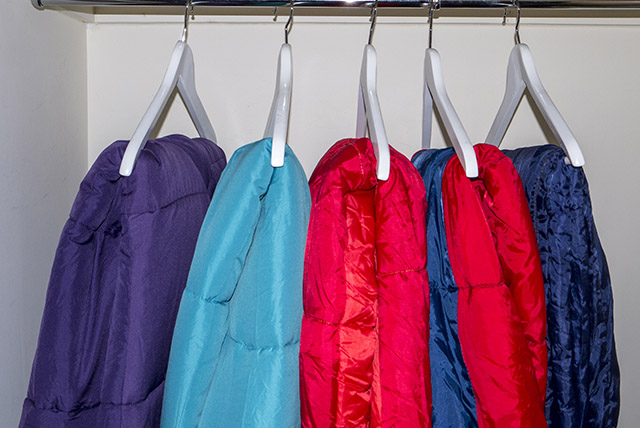
Choosing a sleeping bag is never the easiest task. There are so many factors to take into consideration. From shape, to season rating, insulation to weight. Hopefully this guide on “How to Choose a Sleeping Bag” will go some way to help you make that decision next time you need one. At least you will understand what different things mean a little. Forewarned is forearmed, so they say.
There is even a handy info graphic to hopefully help as well.
How to Choose a Sleeping Bag
The main factors to take into consideration are:
- Shape
- Season rating
- Temperature Rating
- Synthetic or Down
- Weight
In Depth
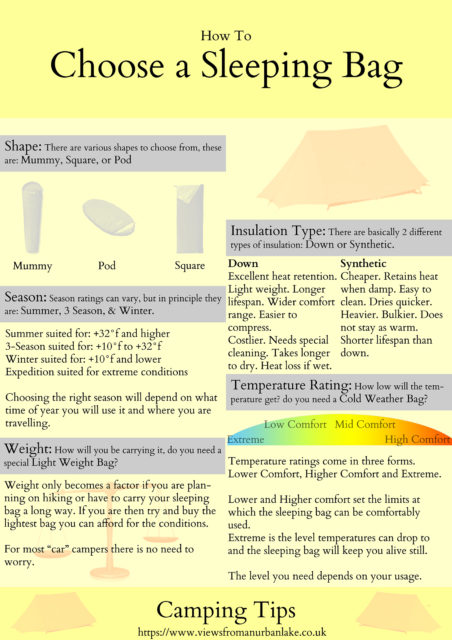
Shape
There are three basic shapes to choose from when you are buying a sleeping bag. The old Square bags; more common Mummy shaped ones; and the newer Pod systems.
The traditional square bag will be heavier than the others and not as good at holding heat. However it can be fully opened out and used as a blanket.
Mummy bags are tapered at the feet, and have a hood both of which help to keep in heat. They are narrower and therefore smaller and lighter than traditional square sleeping bags. One down side though is that they can be snug fitting, not always ideal. (I struggle at first with this as I get a little claustrophobic as I found out when camping in 2017 at the Birdfair).
Sleeping pods are exclusive to Go Outdoors. They are roomier than a mummy bag, but are designed to hold heat better than the traditional square bag. I don’t have any experience of these so you would have to check them out yourself.
Season rating:
Now season ratings can vary by shop or manufacturer, some will state a number (1, 2, 3, 4, or 5), others will have Summer, 3 Season, and Winter. But a good break down I found is:
Summer suitable for temperatures +32°f and higher
3-Season suitable for temperatures +10°f to +32°f
Winter suitable for temperatures +10°f and lower
You won’t get much use out of a summer bag, personally unless travelling somewhere hot, or using one inside, I can’t see a point in these.
3 Season bags are the most common, they usually allow for them to be used from Spring through to Autumn (hence the 3 seasons), some days they may still be a little cold for some, others a little warm. They are a bit like your bedding at home here.
Winter bags will be thick and warm. These are designed for colder months when you need the extra warmth.
There are also expedition bags available, these are for the really extreme conditions some hardy adventurers might find themselves in.
Temperature Rating

Things get a little easier to understand with the temperature rating. There should be three measurements on a sleeping bag. Lower Comfort, Upper Comfort & Extreme. The first two offer the upper and lower temperatures that the bag will be comfortable to use. Extreme gives the lowest temperature the bag will keep you alive in!
Synthetic or Down
The choice of Down or synthetic itself comes down to a number of factors, such as: cost; weight; space available. There are pros and cons to each.
Down
PROS: Excellent heat retention. Light weight (less filling needed for the same warmth level). Longer lifespan. Wider comfort range. Easier to compress.
CONS: Costlier. Needs special cleaning. Takes longer to dry. Heat loss if wet.
Synthetic
PROS: Cheaper. Retains heat when damp. Easy to clean. Dries quicker.
CONS: Heavier. Bulkier. Does not stay as warm. Shorter lifespan than down.
Only you will know which one is right for you. If you are looking to carry the bag all day while hiking, the low weight and smaller size of a down bag will suit. If however you are a car camper then weight and size aren’t and issue, so you can save money with a synthetic filled bag.
Weight
The final factor is weight. Now if you only use your sleeping bag when driving to a camp site weight really won’t be a factor you’d need to consider. If you are a hiker who plan on carrying their gear then you need to choose a lighter bag.
Other factors
You may find other things that draw you in. internal pockets. Left and right zips (useful to have one of each if you want to join two mummy sleeping bags together)
I hope this has gone a little way to help with How to Choose a Sleeping Bag. I don’t think there is much more important than seeing the bag before you plan on buying. Everything may seem perfect on paper, but when you feel the sleeping bag it doesn’t suit your tastes. But these bits of information should help you narrow things down a little.
Did you enjoy How to Choose a Sleeping Bag? Or find it useful? The please share with your friends, via the links below.
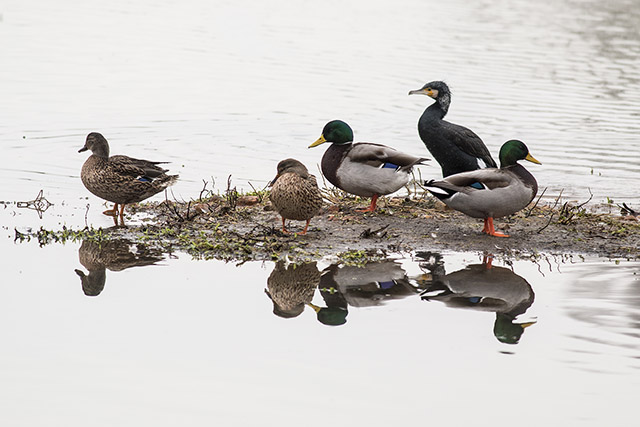


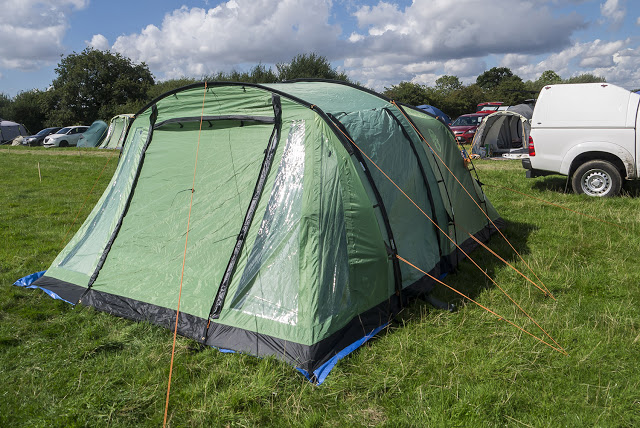

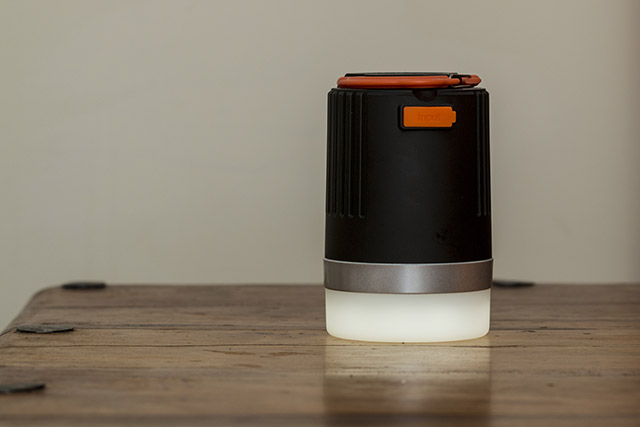
5 Comments
Gareth Mate
Comprehensive with plenty of valid points. I enjoyed reading this. Really is important to get the right one.
Keep up the good work.
Ashley Beolens
Glad you liked it. It can be a confusing process, one I’ve struggled over in the past
Sarah Skilton
A great detailed post, thank you. I love the info-graphic and have pinned. My rule of thumb is you can never be too warm and also go for one season colder than the actual season you are in. 😀
Ashley Beolens
Sounds like my other half, she would rather be too warm than too cold. But you are right really, you can always open the zip if too hot, it is hard to become warmer if the bag isn’t warm enough
henweb
Excellent advice, thank you – I never realised there were so many factors that made a difference to how well the sleeping bag worked. I’m definitely going to have to do more research when we buy our next bags!